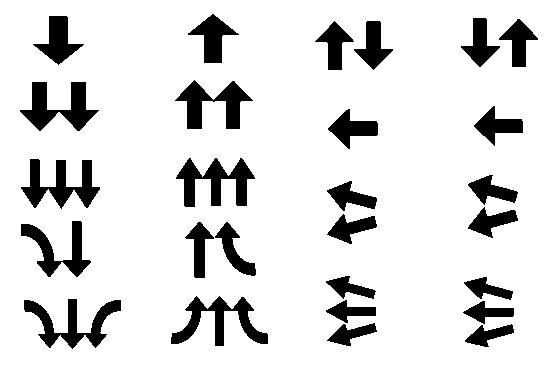Date: Sun, 19 Aug 2018 16:25:47 +0200
William Overington wrote:
>
> I decided that trying to design emoji for 'I' and for 'You' seemed
> interesting so I decided to have a go at designing some.
>
> However pictures of people with arrows seemed to be ambiguous in
> meaning and also they seemed to need to be too detailed for rendering
> in mobile telephone messages and in many situations in web pages and
> emails generally. So eventually I decided that abstract designs would
> be a good solution to the problem.
>
I also played with a similar idea, which requires a new
GSUB LookupType, let’s call it 9: Reader-dependent substitution.
The idea is that the reader of the text will see another glyph when
he/she is the author of the text. For example if you use the codepoint
for for ME, all other readers see the glpyh for YOU and vice versa. This
is for example usable in instant messaging and social networking
services.
In the attachment you find some ideas for the
following emoji
IDEOGRAM FOR ME / IDEOGRAM FOR YOU
IDEOGRAM FOR TWO OF US / IDEOGRAM FOR YOU TWO
IDEOGRAM FOR WE ALL / IDEOGRAM FOR YOU ALL
IDEOGRAM FOR ME AND ANOTHER PERSON / IDEOGRAM FOR YOU AND ANOTHER PERSON
IDEOGRAM FOR ME AND MULTIPLE OTHER PERSONS / IDEOGRAM FOR YOU AND
MULTIPLE OTHER PERSONS
IDEOGRAM FOR YOU AND ME (the counterpart has no own codepoint, but is
mirrored, as you may arrange other emoji to the left or right)
The following emoji may look equal independent of the reader:
IDEOGRAM FOR ANOTHER PERSON
IDEOGRAM FOR TWO OTHER PERSONS
IDEOGRAM FOR MULTIPLE OTHER PERSONS
The rendering engine requires a flag if the user is the author or not.
I think it would be possible to implement.
What about this idea?
Regards,
Marius Spix

- application/pgp-signature attachment: Digitale Signatur von OpenPGP